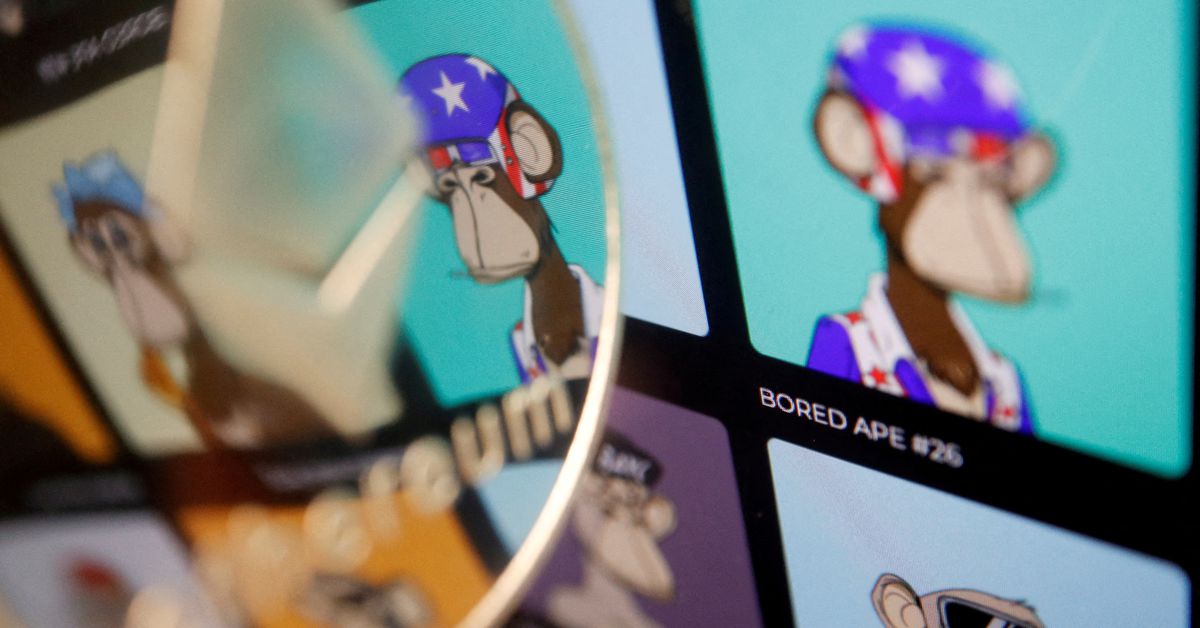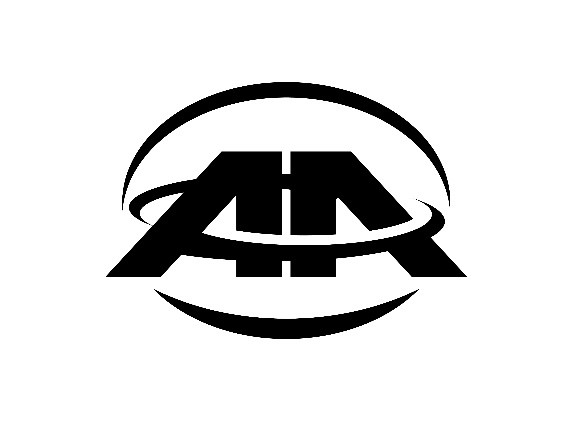FILE PHOTO: A representation of cryptocurrency Ethereum is seen next to non-fungible tokens (NFTs) of Yuga Labs "Bored Ape Yacht Club" collection displayed on its website, in this illustration picture taken March 24, 2022. REUTERS/Florence Lo/Illustration/File Photo
September 13, 2022 – NFTs, or non-fungible tokens, represent ownership interests in digital assets. Each NFT is unique, as distinct from fungible assets such as U.S. currency, Bitcoin or Ethereum, and created on a blockchain (by "minting").
As background, an NFT is typically comprised of two components: the on-chain token and the off-chain digital work or real-world asset to which that NFT attaches or identifies. The link between these two components is reflected in the metadata of the NFT, which often includes a pointer to the digital work's location. While the NFT purchaser owns the on-chain token, the digital work is typically only licensed.
NFTs allow any digital thing to be "tokenized." A .jpeg or. gif of a meme or a tweet, a video or audio file, a piece of digital art or any other digital file can be tokenized. With NFTs, you can invest in something of value without needing to physically own or store the respective item. NFTs are sometimes referred to in connection with "Web3".
Web3 is a term that describes a new, decentralized version of the internet. Web 3 uses blockchains, cryptocurrencies, and NFTs to provide ownership to users, and has been said to put "power in the hands of individuals rather than corporations." See https://ethereum.org/en/web3/.
Once an NFT is created, it can be bought, sold and resold on secondary market platforms, such as OpenSea or Rarible. Buying an NFT usually gets you some basic usage rights, like being able to post the image online or set it as your profile picture — plus, of course, bragging rights — with a blockchain entry to back it up. And its value may increase, meaning you can potentially sell it for profit in the future.
But what else do you get? Do you own the intellectual property (IP) associated with your NFT?
Each NFT comes with "rules," or software code (called smart contracts), recorded on the blockchain to govern actions such as ownership verification, permitted uses and transferability, as well as royalty payments for secondary sales and beyond. Smart contracts can also be used to link the NFT to any number of other assets, including art, music, other digital files or even assets.
It is thus important to distinguish between ownership of an NFT — the unique token on the blockchain — and ownership of an asset that may be linked to or associated with that NFT.
Purchase of an NFT linked to an asset does not necessarily equate to purchase of IP rights in that underlying asset. Those rights transfer to the NFT purchaser only if the owner of that asset expressly transfers them in a license agreement with the NFT purchase.
The IP of the underlying asset is still governed by traditional IP laws. IP rights are typically granted from an NFT creator to an NFT purchaser through a license agreement contained in a smart contract. IP license agreements are necessary to protect IP creators and their financial interest in and to their intellectual property, even after it is sold.
Because NFTs are intellectual property, the same holds true for NFT license agreements. Specifically, NFT creators may dictate exactly which rights original owners and purchasers hold in purchased NFTs while also preserving their ability to continue to profit from their creations by requiring a certain percentage of the subsequent sales of their NFTs to be paid to them.
When NFTs hit the mainstream in early 2021, the scope of licenses to digital works was extremely limited. This is due to the default rule that IP rights, particularly copyright rights, at the heart of most NFTs, remain with the rights owner unless they are explicitly granted to another, even where someone buys a physical work that embodies those rights. (For instance, under the Copyright Act, the copyright owner has the exclusive right to, e.g., reproduce or distribute the copyrighted work. Purchase of a work protected by copyright (like the book, "Dune") does not automatically grant the purchaser any underlying copyright rights.)
The issue of whether terms and conditions bind the owner of an NFT is particularly complicated with respect to downstream purchasers, often referred to as secondary purchasers, because there currently is no effective and generally accepted mechanism for legal terms to travel with an NFT.
When a secondary purchaser seeks to acquire an NFT through a marketplace or directly from an NFT owner, they are likely not presented with the terms of use that accompanied the initial sale. Instead, they are able to view an image and certain identifying information about the NFT and its price. While secondary marketplaces typically have their own terms and conditions, these relate to the use of the marketplace, not the NFTs being sold.
NFT marketplaces typically have standard NFT licensing agreements available to creators through their platform. These may or may not provide the full protection a creator is looking for.
Some marketplaces allow a creator to draft their own custom license agreement. For example, if a creator wants to set parameters regarding what purchasers can do with the NFT, how subsequent purchasers obtain ownership of the NFT or even whether to attach a physical experience opportunity to an NFT, they might be able to do that via a custom license.
Surveying the terms and conditions and licenses granted by well-known brands that have released NFT collections reveals a spectrum of approaches to licensing rights in underlying IP. While not comprehensive, the following three categories are illustrative:
(1) a "traditional" approach, where buying an NFT grants the owner no rights in the underlying IP;
(2) a middle-ground approach, where some rights are granted in underlying IP; and
(3) a "crypto-native" approach, where purchasing an NFT grants full rights in the underlying IP.
Much of the potential and promise of Web3 and NFTs centers on the technology's ability to support creators and community and, through tokens, ownership by these creators and community members of the value they help create. Traditional approaches adapted to the metaverse and NFTs present risks that are familiar to those who have long worked to protect their IP IRL; however, crypto-native approaches that seek to engage the creators and community that represent the promise of Web3 will present new risks.
When an NFT owner provides a buyer with a license to IP rights in the NFT — to commercialize or to create derivative works — it is imperative to set out clearly in the terms and conditions the scope of permissible uses as well as restrictions on use. An example of this is the "NFT License" developed by Dapper Labs (creators of CryptoKitties and NBA Top Shot).
In addition to addressing personal use, the NFT License grants owners limited commercial use rights. The license also sets out a number of clear use restrictions, prohibiting owners from using their NFT IP for promoting hatred, intolerance, violence or cruelty; promoting other third-party products or services; or producing movies, videos or other media. If NFT owners violate these provisions, the original creator of the NFT can terminate the agreement.
Practically, it might be difficult for a brand to repossess an actual NFT as a consequence of a purchase violating an underlying license. But since a brand's license agreements govern the NFT owner's rights with respect to the underlying assets of the NFT, drafting clear licenses that are presented to buyers and easily accessible becomes important for protecting a brand's IP.
Sherli M. Furst is an associate in Hunton Andrews Kurth's Intellectual Property group in the firm's New York office. She handles a broad range of intellectual property matters in the retail and consumer products, fashion, and entertainment industries with a special focus on complex IP disputes such as trademark and copyright infringement, internet rights and the DMCA, contract and commercial disputes, rights of publicity and unfair competition. She can be reached at [email protected].
Sara Merken, David Thomas
Gregg Wirth
Eve Starks
Natalie Runyon
Reuters, the news and media division of Thomson Reuters, is the world’s largest multimedia news provider, reaching billions of people worldwide every day. Reuters provides business, financial, national and international news to professionals via desktop terminals, the world's media organizations, industry events and directly to consumers.
Build the strongest argument relying on authoritative content, attorney-editor expertise, and industry defining technology.
The most comprehensive solution to manage all your complex and ever-expanding tax and compliance needs.
The industry leader for online information for tax, accounting and finance professionals.
Access unmatched financial data, news and content in a highly-customised workflow experience on desktop, web and mobile.
Browse an unrivalled portfolio of real-time and historical market data and insights from worldwide sources and experts.
Screen for heightened risk individual and entities globally to help uncover hidden risks in business relationships and human networks.
All quotes delayed a minimum of 15 minutes. See here for a complete list of exchanges and delays.
© 2022 Reuters. All rights reserved


